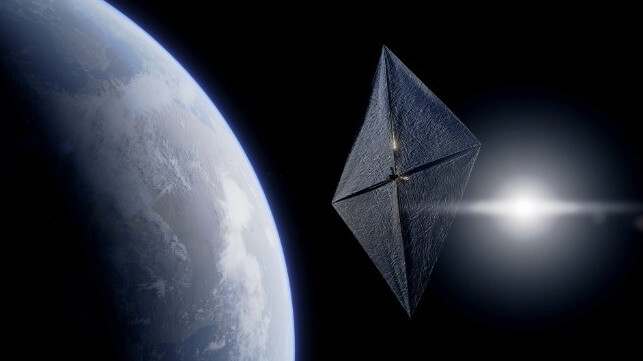CMA CGM Sets Sail in Space With Funding for Solar-Sail Startup

Ocean carrier CMA CGM sails to six continents and dozens of islands, but its latest project will take its reach even further. The French shipping company has co-sponsored the first test launch of a French solar sail-powered spacecraft, Gama Alpha, which successfully entered orbit aboard a SpaceX Falcon 9 rocket on Tuesday morning.
A solar sail allows a spacecraft to accelerate using sunlight for propulsion. In the vacuum of outer space, the faint pressure produced by photons bouncing off the reflective foil sail is enough to drive the craft forward. In the absence of anything to slow it down, the acceleration is additive, and solar sail craft are theoretically capable of attaining 80% of the speed of light over long time scales.
To navigate, a positioning system for the sail can be used to change the spacecraft's trajectory, and it can even be used to tack "upwind" towards the sun, according to French aerospace startup Gama.
"In space, the sun’s radiative pressure allows constant acceleration. The result? Missions that are 10 to 20 times less expensive and no longer limited by a fuel budget. A solar sail is poetic, inherently sustainable, and dramatically lowers the cost of access to deep space or unstable orbits," said Andrew Nutter, Gama's co-founder.
To pursue its goals, Gama has support from the French Space Agency (CNES) and from CMA CGM Group. In a statement on CMA CGM's backing, Gama said that with a "new impetus to develop space resources, reliable and affordable space logistics will be necessary to help develop commercial opportunities."
The concept of the solar sail goes back centuries, and the first successful test in space was in 2010. The Japanese-built IKAROS spacecraft used a unique solar sail to transit past Venus, then sailed onwards into its own long-term orbit around the sun. It was last in communication with ground receiving stations in 2015. A follow-up Japanese mission to Jupiter with a larger solar-sail spacecraft was planned, but it lost a competition for a launch slot in 2020.
Gama's first test flight will help further advance this concept. Its shoebox-sized Cubesat, Gama Alpha, comes packed with an 800-square-foot sail. The test will demonstrate control of the sail and sustained navigation, after which the satellite will deorbit and burn up in the atmosphere. This will also show how a sail can be used to deorbit satellites at their end of life, adding drag in the remnant atmosphere found in low earth orbit.
The two-year development program behind Gama Alpha will set up the second mission - Gama Beta - for success. Gama Beta will be launched at an orbit twice as high as Gama Alpha, and it will focus on demonstrating navigation. The second demonstrator flight will help pave the way for operational projects, in partnership with space agencies and commercial space companies.
"While companies today are focused on low earth orbit, we have decided to look further afield and prepare for the space operations of the future. Thanks to the solar sail, we offer an economically viable alternative to continue exploring the solar system and carry out increasingly complex missions," said Louis de Goüyon Matignon, Gama co-founder.
